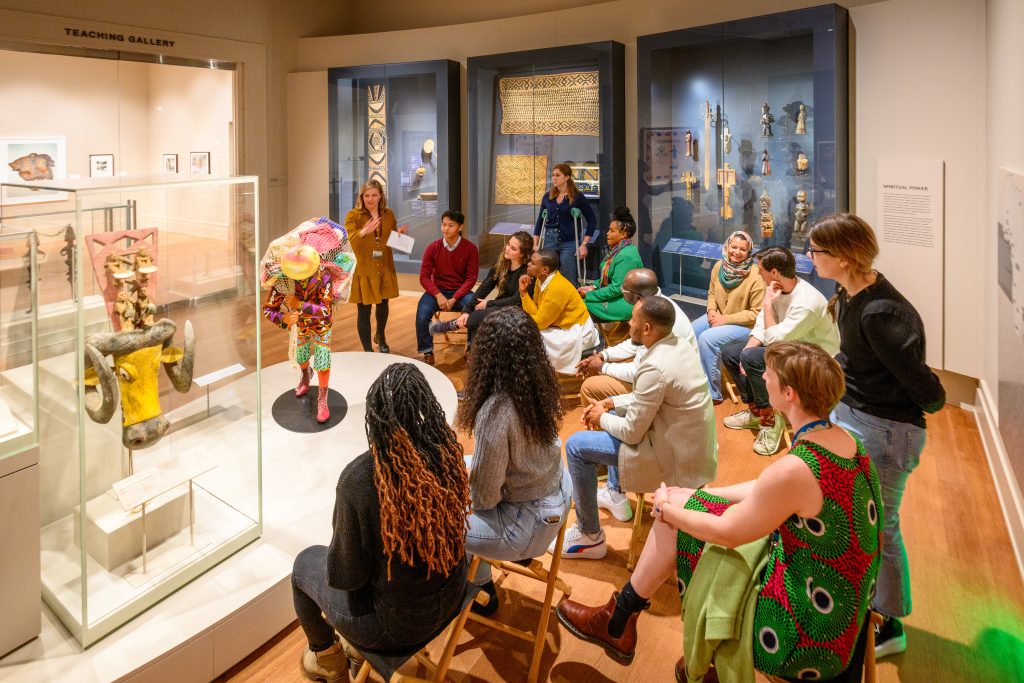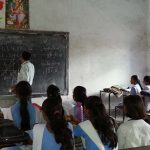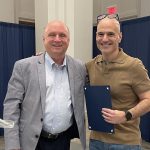When Notre Dame’s new Raclin Murphy Museum of Art opened last month, two Keough School faculty were among the first to bring their students through its doors. Ellis Adams convened his Environmental Policy class around Yinka Shonibare’s mixed media sculpture “Earth Kid,” a work that explores climate change, fragile global environments, histories of western colonization, and the impact of climate change on young people. Iris Ma brought the 40 undergraduates in her Introduction to Global Affairs and Integral Human Development course to explore similar themes through a viewing and discussion of “Earth Kid.”
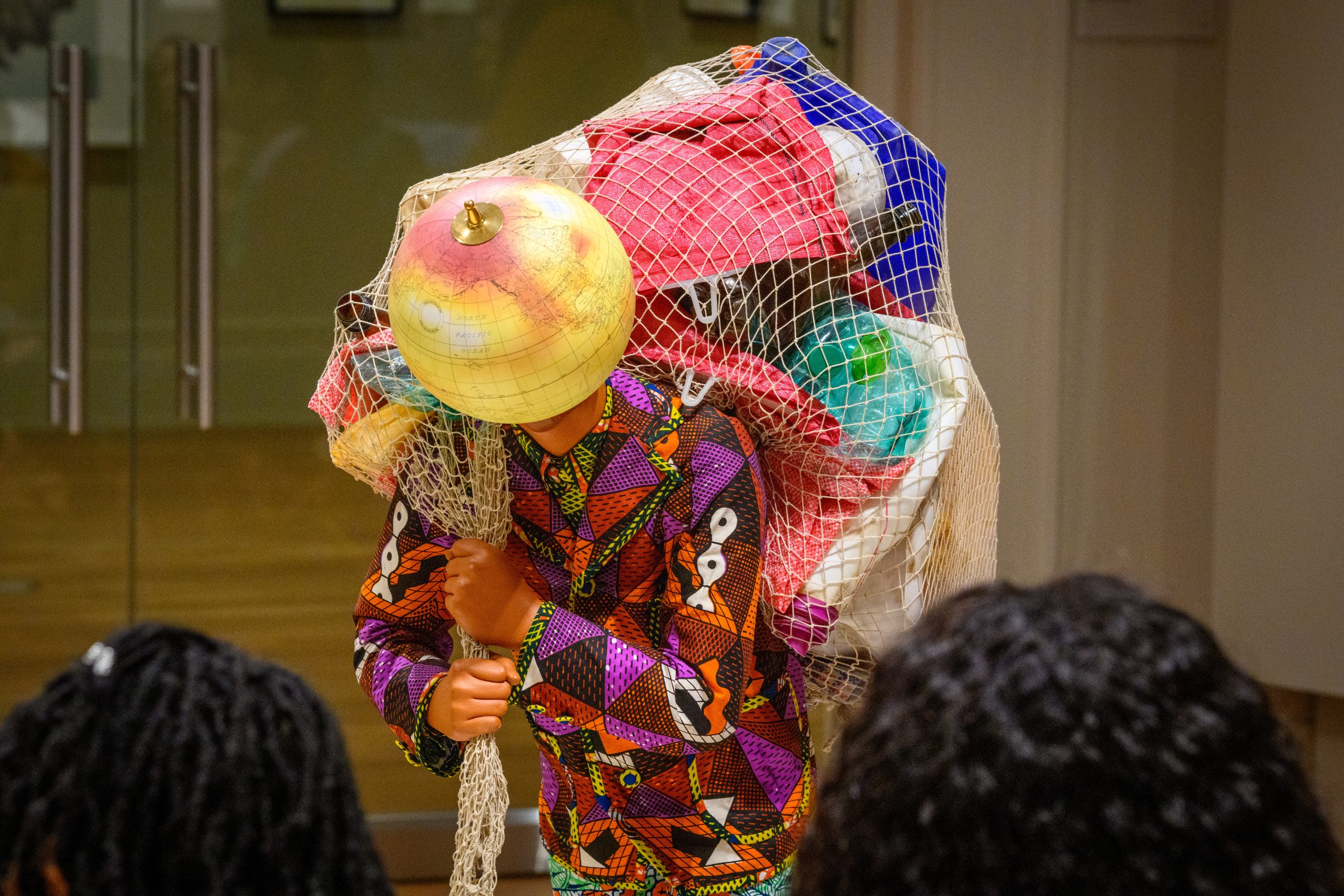
Because global affairs is an interdisciplinary course of study, art can serve as a valuable inroad for approaching global issues such as climate change, said Adams, associate professor of geography and environmental policy at the Keough School.
“Art can shed more light on the concepts in my course,” he said. “A sculpture like ‘Earth Kid’ can help prompt discussion on pollution, the impact of wealthier countries’ consumption on poorer countries, the legacy of colonialism—we can connect it to the different issues we’ve covered in class.”
Adams said visual art provides ample opportunity for diverse student interpretations with lively discussion of these interpretations.
“It’s very powerful to let students view art and draw their own conclusions from their own vantage points based on how much they know about the environment,” he said. “It’s a valuable experience for all of us to be looking at the same thing, yet to come up with different interpretations. But while they’re different, they are all within the broad confines of environmental change, which is the larger topic we are all interested in and that we’ve been covering throughout the semester. That’s the value.”
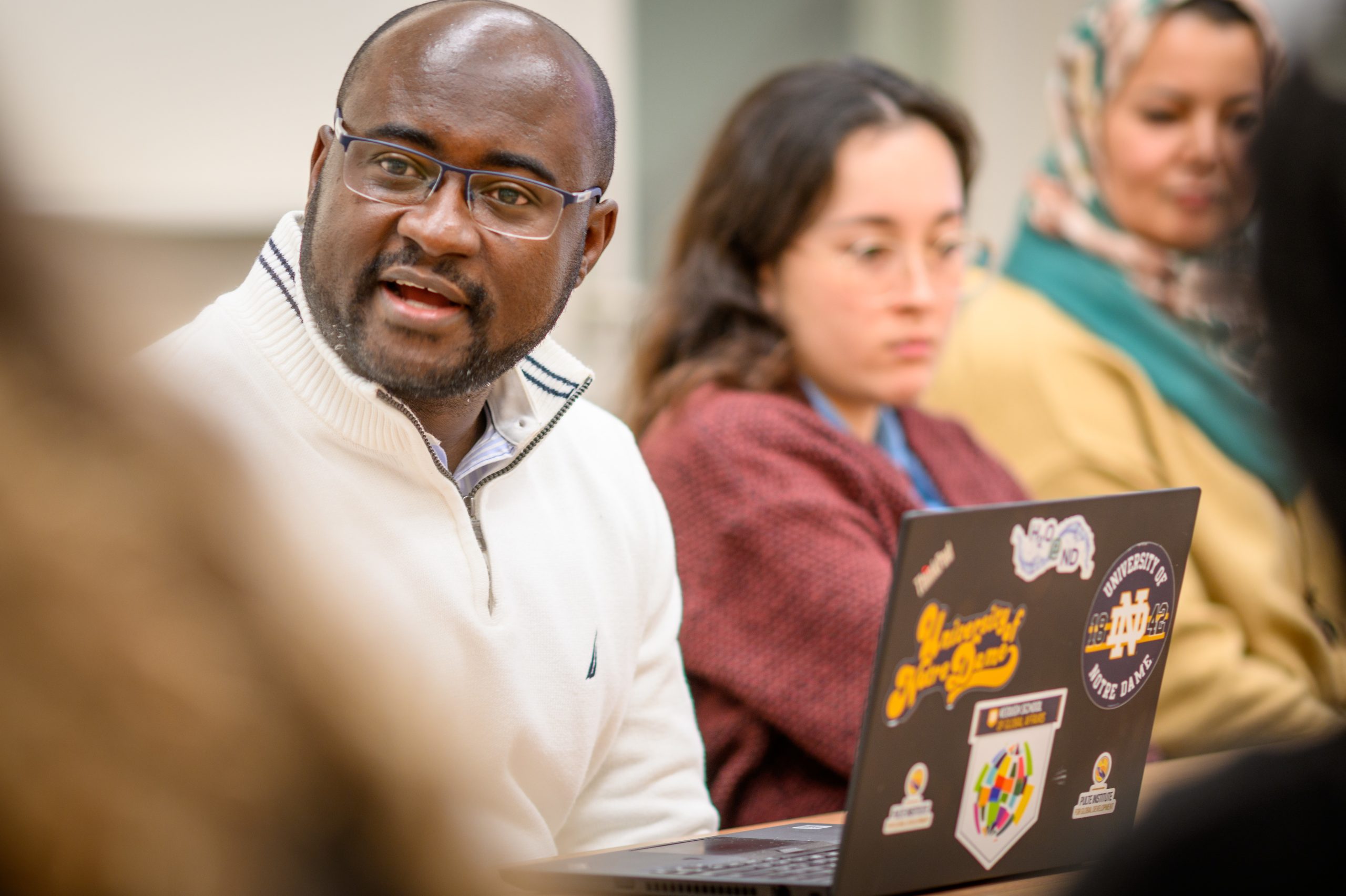
Ma begins and ends her course with art, which serves a unifying function in a 15-week course that covers multitudes: sustainable development, climate change, race, gender, cultural identity, migration, refugees, global governance, global health and much more in the broad field of global affairs. Ma’s first assigned reading is a chapter from Vermeer’s Hat: The Seventeenth Century and the Dawn of the Global World by Timothy Brook, which explores how Vermeer’s paintings offer a window into the global networks of trade and conquest that emerged in the 17th century—an example of early global encounters which laid the foundations for globalization.
“All of the topics we cover are issue-driven with a problem-solving approach,” said Ma, associate teaching professor at the Keough School. “But at the core of global affairs are human beings and how their lives are impacted by global changes. Thinking creatively and bringing our imagination to the table plays a crucial role in this learning journey for my students, and art enables us to think outside of the box and makes us consider things we haven’t thought about yet.”
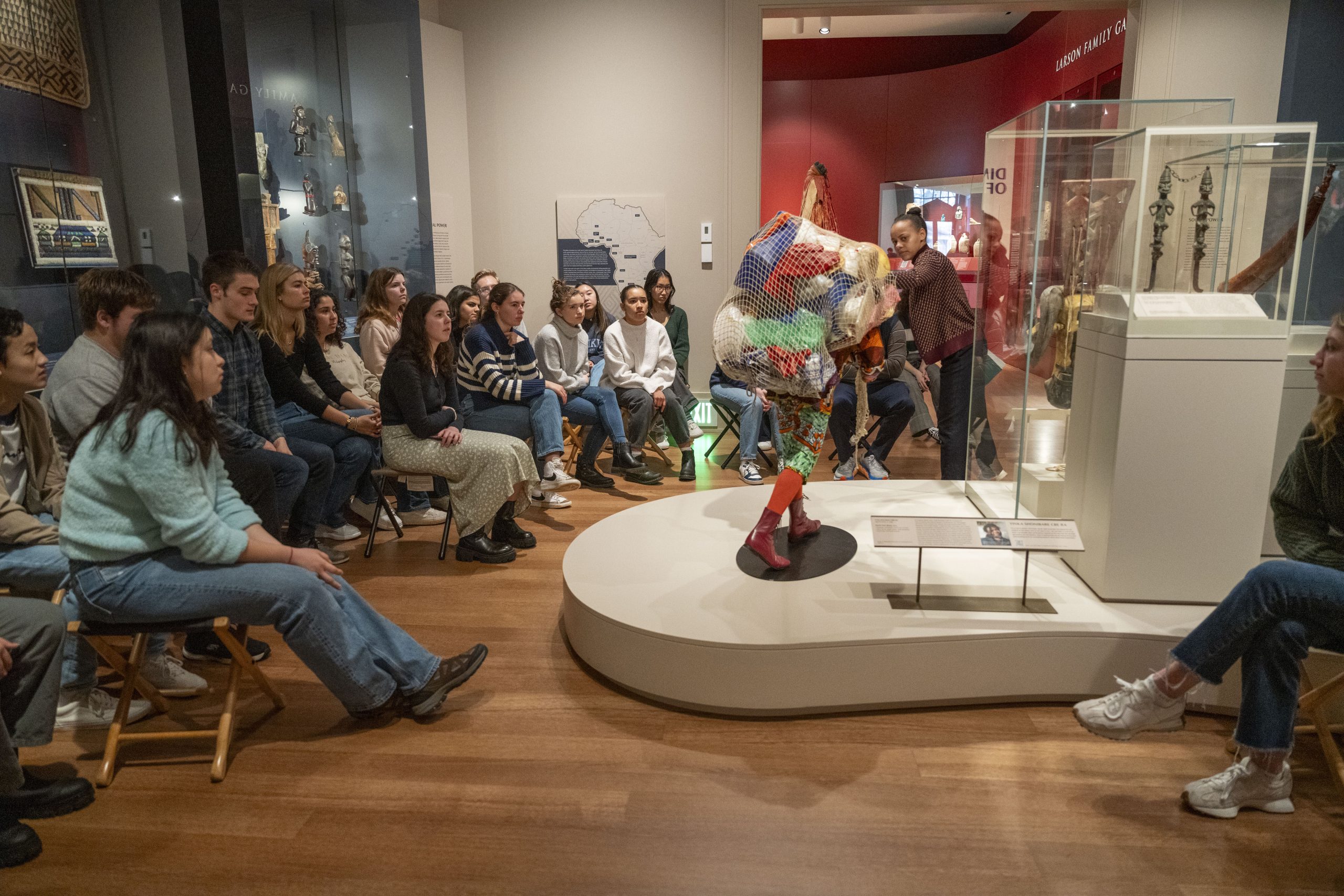
“Earth Kid,” acquired by Notre Dame in 2021, is part of an iconic body of work by the Nigerian-British artist that addresses compelling social and political issues. While most of Shonibare’s figures are headless, for “Earth Kid” he uses a globe for the head, singeing it to signify the crisis of global drought. The diminutive figure carries a bag of found objects on its back, wearing pants made from brightly patterned Dutch batik cloth known as Ankara fabric, which signals the complex relationship between Europe and Africa.
“Having a real piece of art in front of us allows us to connect lots of themes,” Ma said. “For example, climate change and sustainable development, and the ‘integral ecology’ articulated by Pope Francis that we are an integral part of the earth rather than the ones that manipulate and change it.”
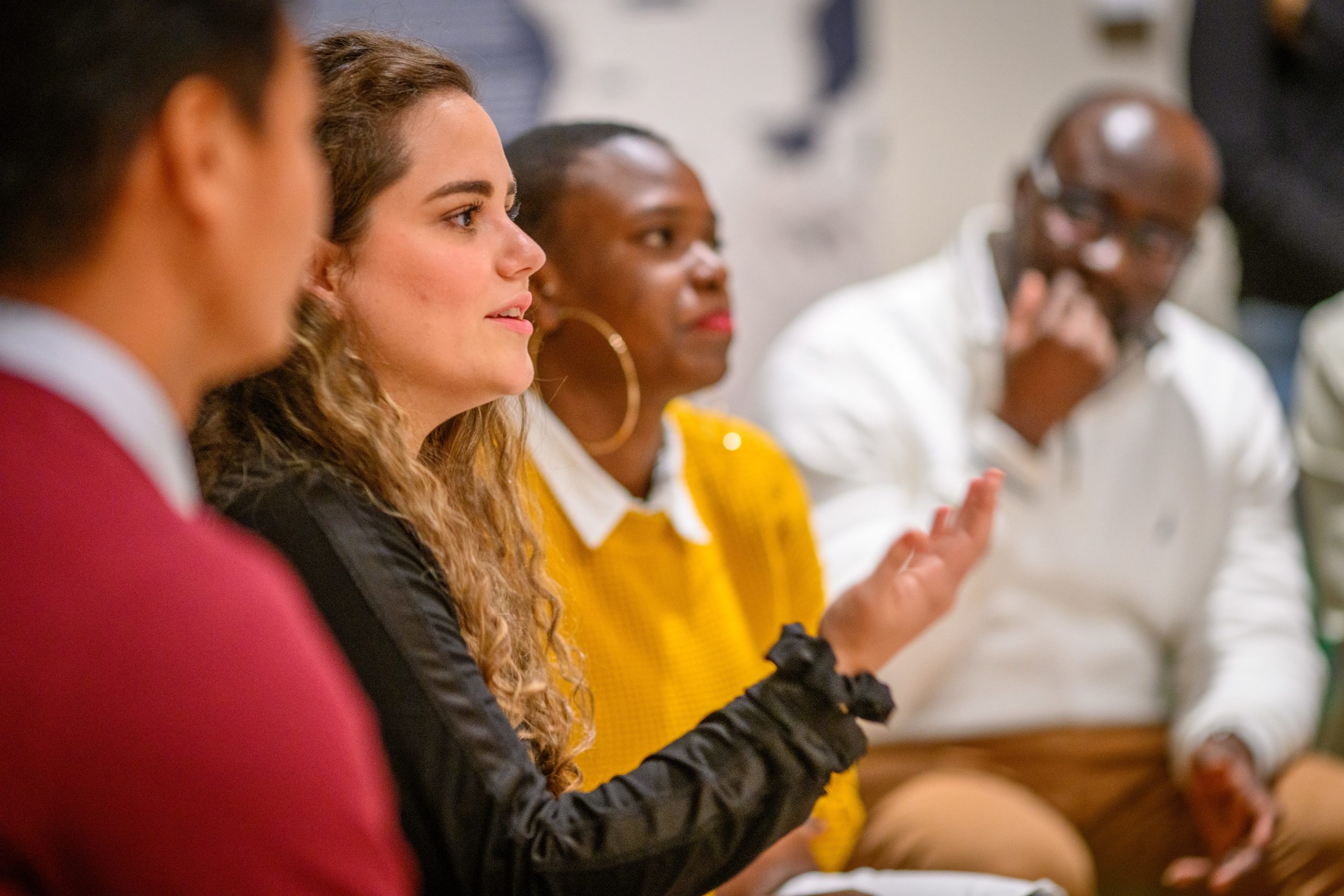
Adams has regularly brought his students to view art from Notre Dame’s expansive collection for over the past two years. An expert in water, sanitation, and hygiene and water policy, he also serves as a faculty discussant for PhotoFutures, a collaborative student collecting group that acquires contemporary photography for Notre Dame. Faculty discussants share their expertise with students as a lens through which students consider photos for the university’s collection.
Bridget Hoyt, curator of education for academic programs at the Raclin Murphy Museum, says that incorporating art into the study of global affairs helps broaden students’ thinking.
“Students see that there are many ways of asking—and trying to answer—questions about our world,” Hoyt said. “Their thinking is more expansive when they consider the questions asked by an artist in a work of art and the questions asked by a research scientist as complementary to each other.”
Adams and Ma are among several Keough School faculty members who incorporate the museum into their courses. Daniel Miller brings his Introduction to Global Affairs class to view “Earth Kid,” and psychologist Laura-Miller Graff begins her courses on resilience by discussing photography that brings attention to the diverse ways that resilience can be experienced and described. Students in Tamara Kay’s Visualizing Global Change class spend several sessions studying how social problems are portrayed in photography, and Director of Catholic Peacebuilding Studies Gerard Powers encourages his students to view museum photos related to nuclear proliferation and disarmament.
“There is reciprocity between diverse ways of thinking and knowing about various issues,” Hoyt said. “The interdisciplinary dialogue that occurs is one of the reasons a university museum is so valuable.”
